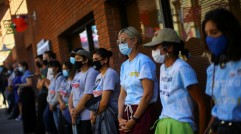Lyft vs. Uber: Drivers Struggle Financially as Prices Drop Due to Competition
Ride sharing has become a new hip way to travel in the U.S. with Uber and Lyft as the two dominant industry players.
Of course, when something does well in a niche market, it is to be expected that more competitors will come to have a share of the market.
When the ride sharing scheme was initially introduced by Uber, their service was considered a premium and they were able to charge higher prices than traditional taxis. This was because there were no long waits or queuing necessary as Uber developed their own system and smartphone app to make booking a ride easier and faster.
However, the scene is now different due to competition and Uber was forced to lower its fares, making it cheaper to have an UberX ride in several metropolitan areas compared to regular taxi cabs.
The move was seen as a way to ease out Lyft, which charges lower rates. The rates fluctuate though, since Uber raises their rates (termed "surge pricing") during peak hours. Lyft has what they call "prime time" pricing although they also have "happy hour" rates when the demand for rides is low.
But now, Uber drivers are getting furious over the rate cuts.
Uber takes away a fixed 20 percent commission from the drivers, which means that the drivers will have to contend with an increase in pay cuts because of the lower fare rates. Drivers in Los Angeles and San Francisco organized and accused the company's employees of getting rich while the drivers are now struggling financially.
Uber helped some drivers by offering financing so they can purchase a car and drive for the company, but with the current fare cuts, these drivers would be seriously affected, according to Vox.
With the market being very competitive at the moment, Uber had no recourse but to lower their rates or they would lose out to Lyft and other similar service providers. Likewise, if they have higher rates, they would have lower ride orders, which will then cause them to lose many drivers.
Subscribe to Latin Post!
Sign up for our free newsletter for the Latest coverage!
* This is a contributed article and this content does not necessarily represent the views of latinpost.com














